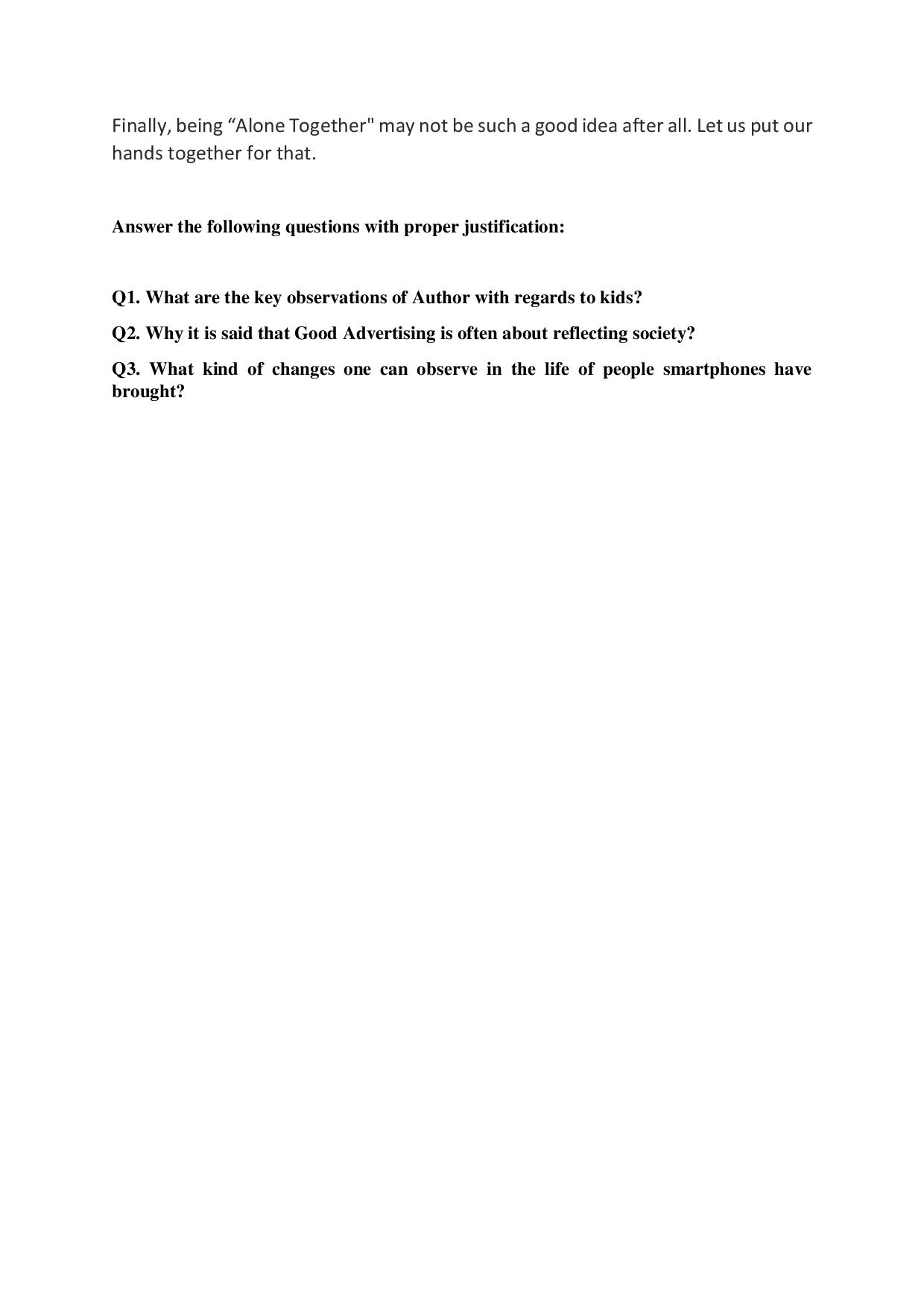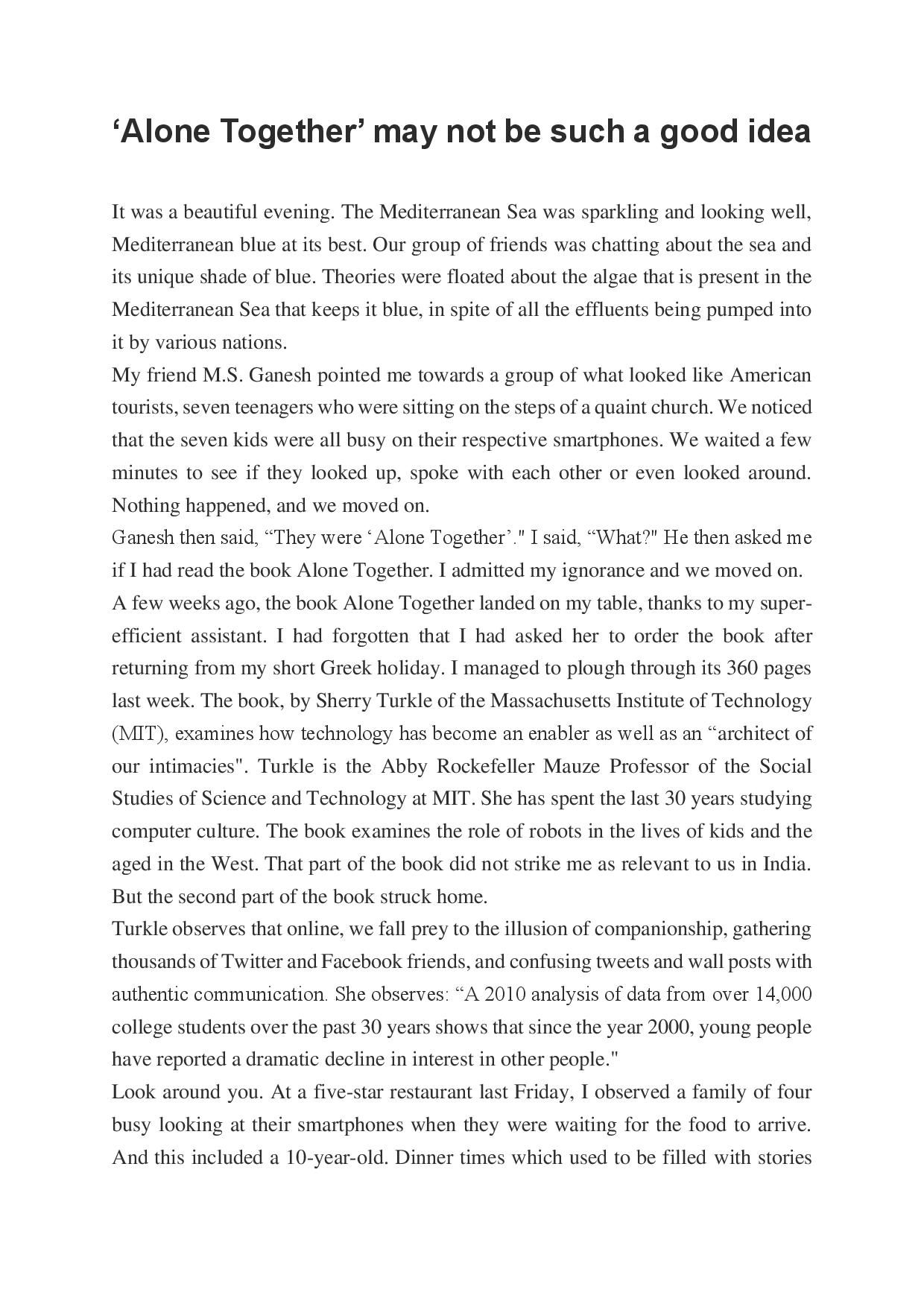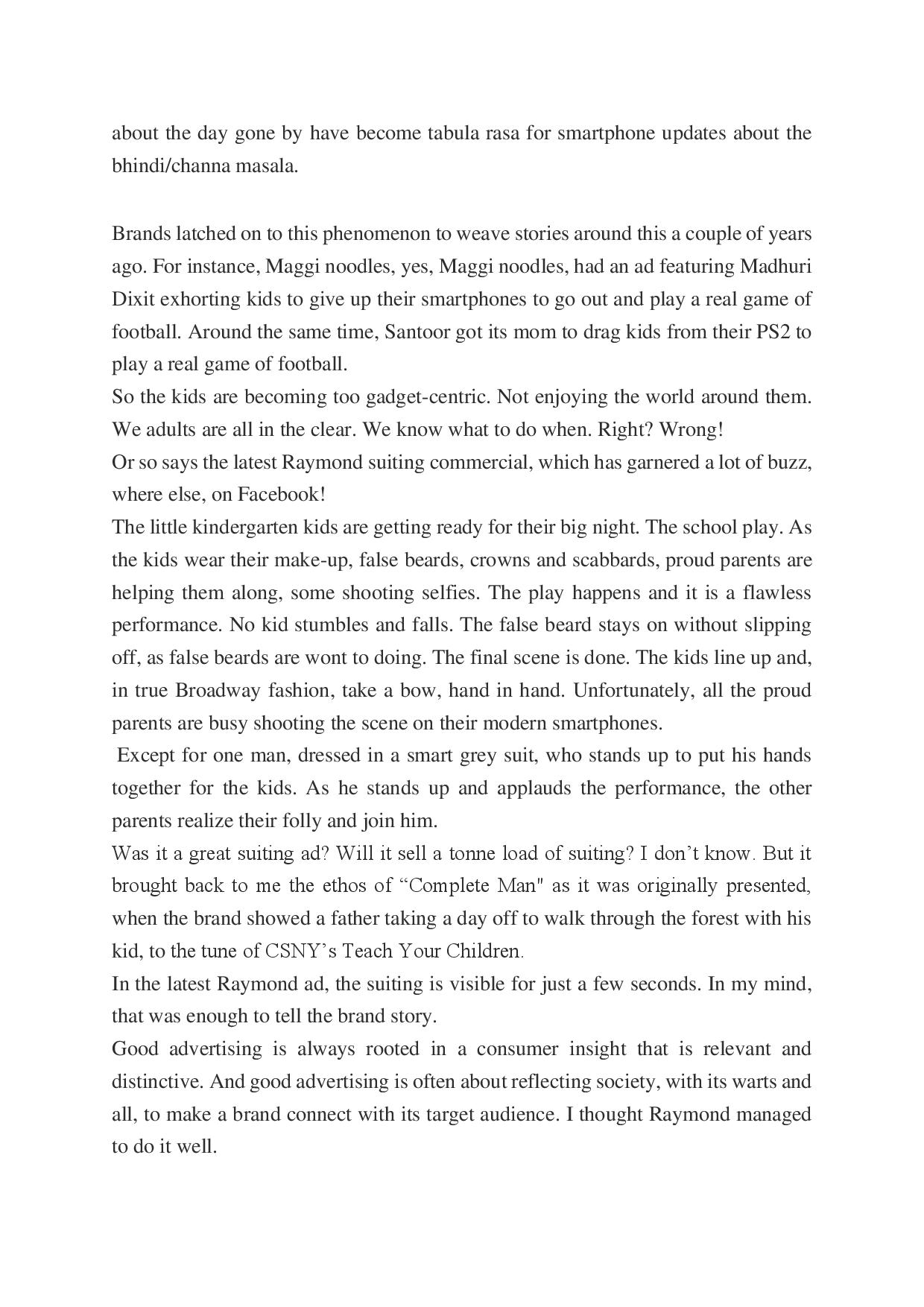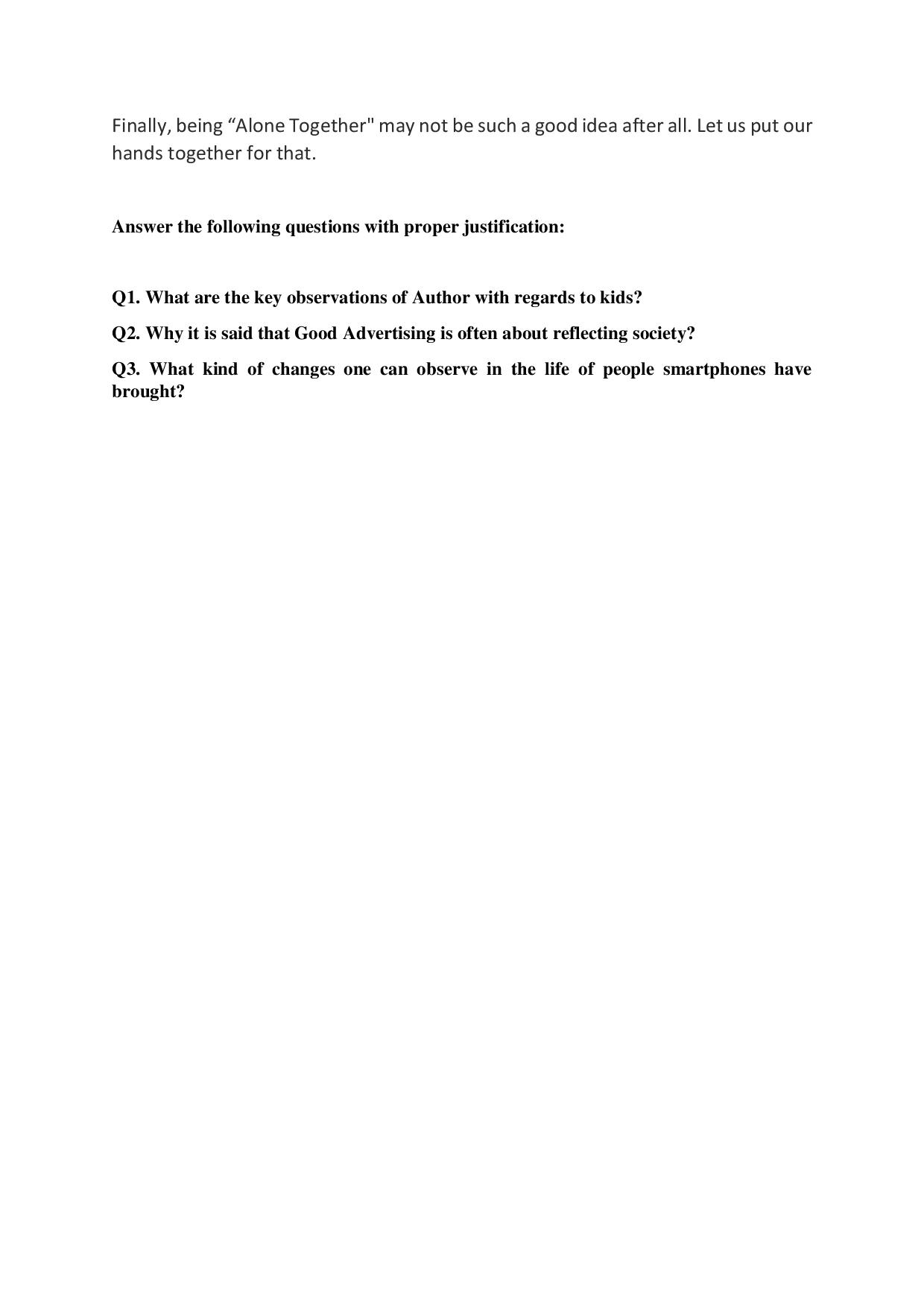
This is the case study attached in the images. Please help me to solve this.
'Alone Together' may not be such a good idea It was a beautiful evening. The Mediterranean Sea was sparkling and looking well, Mediterranean blue at its best. Our group of friends was chatting about the sea and its unique shade of blue. Theories were oated about the algae that is present in the Mediterranean Sea that keeps it blue, in spite of all the effluents being pumped into it by various nations. My friend M.S. Ganesh pointed me towards a group of what looked like American tourists, seven teenagers who were sitting on the steps of a quaint church. We noticed that the seven kids were all busy on their respective smartphones. We waited a few minutes to see if they looked up, spoke with each other or even looked around. Nothing happened, and we moved on. Ganesh then said, \"They were 'Alone Together'.\" I said, \"What?" He then asked me ifl had read the book Alone Together. I admitted my ignorance and we moved on. A few weeks ago, the book Alone Together landed on my table, thanks to my super- efticient assistant. I had forgotten that I had asked her to order the book after returning from my short Greek holiday. I managed to plough through its 360 pages last week. The book, by Sherry Turkle of the Massachusetts Institute of Technology (MIT), examines how technology has become an enabler as well as an \"architect of our intirnacies". Turkic is the Abby Rockefeller Mauze Professor of the Social Studies of Science and Technology at MIT. She has spent the last 30 years studying computer culture. The book examines the role of robots in the lives of kids and the aged in the West. That part of the book did not strike me as relevant to us in India. But the second part of the book struck home. Turkle observes that online, we fall prey to the illusion of companionship, gathering thousands of Twitter and Facebook friends, and confusing tweets and wall posts with authentic communication. She observes: \"A 2010 analysis of data from over 14,000 college students over the past 30 years shows that since the year 2000, young people have reported a dramatic decline in interest in other people." Look around you. At a ve-star restaurant last Friday, I observed a family of four busy looking at their smartphones when they were waiting for the food to arrive. And this included a 10yearold. Dinner times which used to be filled with stories about the day gone by have become tabula rasa for smartphone updates about the bhindi/channa masala. Brands latched on to this phenomenon to weave stories around this a couple of years ago. For instance, Maggi noodles, yes, Maggi noodles, had an ad featuring Madhuri Dixit exhorting kids to give up their smartphones to go out and play a real game of football. Around the same time, Santoor got its mom to drag kids from their P82 to play a real game of football. So the kids are becoming too gadgetcentric. Not enjoying the world around them. We adults are all in the clear. We know what to do when. Right? Wrong! Or so says the latest Raymond suiting commercial, which has garnered a lot of buzz, where else, on Facebook! The little kindergarten kids are getting ready for their big night. The school play. As the kids wear their makeup, false beards, crowns and scabbards, proud parents are helping them along, some shooting seles. The play happens and it is a awless performance. No kid stumbles and falls. The false beard stays on without slipping off, as false beards are wont to doing. The nal scene is done. The kids line up and, in true Broadway fashion, take a bow, hand in hand. Unfortunately, all the proud parents are busy shooting the scene on their modern smartphones. Except for one man, dressed in a smart grey suit, who stands up to put his hands together for the kids. As he stands up and applauds the performance, the other parents realize their folly and join him. Was it a great suiting ad? Will it sell a tonne load of suiting? I don't know. But it brought back to me the ethos of \"Complete Man" as it was originally presented, when the brand showed a father taking a day off to walk through the forest with his kid, to the tune of CSNY's Teach Your Children. In the latest Raymond ad, the suiting is visible for just a few seconds. In my mind, that was enough to tell the brand story. Good advertising is always rooted in a consumer insight that is relevant and distinctive. And good advertising is often about reecting society, with its warts and all, to make a brand connect with its target audience. I thought Raymond managed to do it well. Finally, being "Alone Together" may not be such a good idea after all. Let us put our hands together for that. Answer the following questions with proper justification: Q1. What are the key observations of Author with regards to kids? Q2. Why it is said that Good Advertising is often about reflecting society? Q3. What kind of changes one can observe in the life of people smartphones have brought










